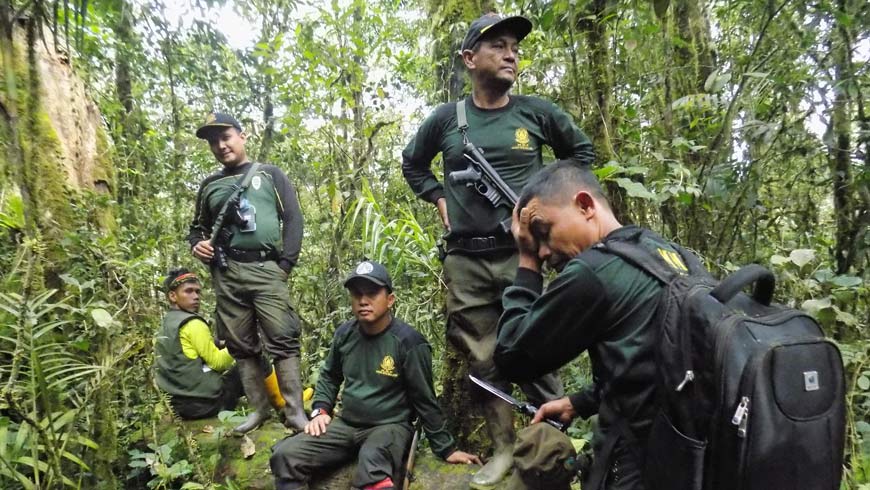
Big cats are among the most widely recognised and admired animals across the globe.
These charismatic predators are facing many and varied threats; loss of habitat and prey, conflicts with human, poaching, and illegal trade. Tiger populations plummeted by 95% over the past century.
World Wildlife Day 2018 under the theme “Big cats: predators under threat" gives us the opportunity to raise awareness about their plight and to galvanise support for the many global and national actions that are underway to save these iconic species.
Existing on the knife-edge of extinction with only an estimated 400 cats remaining, the Sumatran tiger draws the eyes of the world to Indonesia's tiger habitat. Scientists and poachers alike eagerly search the dwindling rainforest for signs of the big cat, the last remaining island-dwelling sub-species of tiger since the Bali tiger and the Javan tiger passed into extinction within living memory.
Protected areas such as Bukit Barisan Selatan National Park (BBSNP), now serve as a last refuge for Sumatra's unique sub-species of tigers.

With so much at stake, conservation organisations - both international and Indonesian - have worked for decades to study and protect Sumatra's rich natural heritage.
Long-term solutions for securing the island's forests, wildlife and ecosystem services lie in consolidating a network of effectively managed and adequately funded protected areas.
The UNDP-supported, GEF-financed Sumatran Tiger Project (Transforming Effectiveness of Biodiversity Conservation in Priority Sumatran Landscapes) aims to do just that, nurturing partnerships that can transform the effectiveness of biodiversity conservation in priority Sumatran landscapes.
Harnessing the extensive experience of the Wildlife Conservation Society (WCS), Fauna & Flora International (FFI) and the Zoological Society of London (ZSL), the project is working with key national parks (including BBSNP) to effectively implement Indonesia's National Tiger Recovery Plan.

The project supports a coordinated approach by partnering with Forum HarimauKita (Sumatran Tiger Forum) - to harness their invaluable local expertise - working in conjunction with the Indonesian Ministry of Environment and Forestry to save this majestic species.
The project team also understands that it is imperative to safeguard the livelihoods of local citizens as they work toward increased well-being.
This partnership is already bearing fruit, as NGOs, government agencies and local citizens work alongside one another to coordinate activities, share knowledge and live out a commitment to preserve healthy, functioning ecosystems across Sumatra.

For over two decades, WCS has conducted research in BBSNP out of Way Canguk Research Station, inventorying the rich biodiversity of the park, wildlife populations, climate and ecological health over time. Similarly, Fauna & Flora International's work in Kerinci Seblat National Park began with a camera trap monitoring program in 1996.
With countless other organisations and studies conducted in different locations around the island, collating and analysing the data for an accurate assessment of tiger status can be an immense challenge. Building on the experience of global tiger experts, this project has supported the development of a standard scientific monitoring protocol for tigers, prey species, and forest habitat.
Detection forms a key component of effective protected areas management, all the more important in Sumatra due to the high incidence of illegal logging and wildlife poaching. to strengthen protected area management, project produced a training module to build widespread capacity for SMART (Spatial Monitoring And Reporting Tool) patrolling. Using SMART tool has improved efficiency of patrolling team to detect threats to biodiversity in the project's target landscapes.
‘Through UNDP-GEF project support, we have intensified SMART patrols in 2016 & 2017 as compared to 2015 both in terms of the intensity and coverage’, reports Firdaus Rahman, Landscape Program Manager BBSNP, WCS Indonesia Program. ‘From May to September 2017, our patrol team has covered a total of 229 patrol days and 1468 km, detecting 70 cases of encroachment, 2 cases of illegal logging, 15 cases of poaching, and 19 cases of illegal road/access opening’.
While we adore tigers for their exotic beauty and mystique, the farmers who share the landscape with these fearsome cats often see tigers as a deadly threat. Human death or injury from tiger attack in Sumatra reached 184 cases between 2001-2016.
Within that same period, 1,247 families lost livestock to tiger predation.

This story was originally published by UNDP.
Story by Andrea Egan, Erin Charles, Hizbullah Arief, Midori Paxton, Tashi Dorji / Photos: Sumatran Tiger Patrol team, Forum Harimau Kita, WCS Indonesia, Fauna & Flora International, Dr. Peter Schmidt


